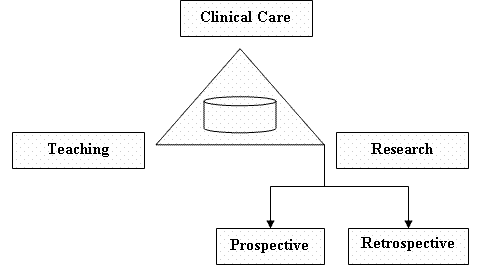Thursday, January 31, 2008 - 9:12 AM
13824
Combining a Clinical Software Program, Research Databases, and Novel Teaching Software with the Use of Medical Informatics in a Resource Limited Environment
BACKGROUND: Despite major advancements in information technology, digital storage and handling of patient data continues to present a major challenge to today's physicians. Not only would use of a combination software program interface/ storage database allow widespread availability of patient data within the hospital setting, but patient care information provided by the database would greatly facilitate teaching efforts, as well as simplify research endeavors (Figure 1 - Ideal Clinical Informatics Software Interface). From an administrative standpoint, review of patient management timelines would allow streamlining of standardized protocol, as well as greatly ease evaluation efforts by national review committees, such as the Joint Commission on Accreditation of Healthcare Organizations (JCAHO). METHODS: In order to evaluate the patient care efficacy of a combination software program interface/ storage database, we utilized a pilot system to store, track, and provide data on patients cared for by our plastic surgery hand service at a major urban, level one trauma center. Between March, 2006 and October, 2007, demographic and diagnostic information linked to CPT and ICD-9 coding was entered, stored, and accessed within the database. The clinical-user interface and research tools were designed using the Visual Studio.NET © environment coupled with a relational database to store information. RESULTS: In total, information on 284 patients was entered into the database. After thorough review and implementation of the system, no major malfunctions were reported and the system never “off-line” during the study period. Security evaluations performed by qualified personnel identified no flaws, in fact, the containment system employed by the study database far exceeded all current security standards of known hospital computer systems. A review of contained information demonstrated that 67.8 % (n = 259) of surgical cases involved male patients, 71.8% of major injuries were commonly related to trauma, and 68% of traumatic defects were associated with multiple injuries. Four-hundred and eighty three high yield clinical information summaries were compiled and separated into twenty-one categories. CONCLUSIONS: Entry, storage and access of patient information remains a challenge in today's clinical setting; however, use of a combination software program interface/ storage database greatly facilitates these processes. When applied in a busy, urban trauma center over several hundred patients, the interface/ database program utilized in the present significantly augmented access to patient information. In addition, database use provided detailed patient information for teaching purposes, research projects, as well as potential administrative overview. Not only does the current pilot system represent an advancement in digital patient information storage today, but continued advancements in similar systems will allow widespread database use and optimization of patient care tomorrow.

